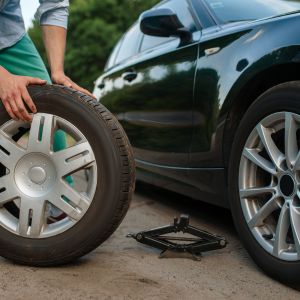Car insurance is a financial safety net that provides peace of mind to drivers facing the unpredictable nature of the road. While many are familiar with the coverage for accidents and collisions, the question often arises: Does car insurance cover breakdowns?
In this comprehensive guide, we will delve into the intricacies of auto insurance policies, decipher the fine print, and shed light on whether breakdowns fall within the scope of coverage.
Table of Contents
ToggleUnderstanding the Basics

Before exploring breakdown coverage, it’s essential to grasp the fundamental components of car insurance. Typically, auto insurance is divided into two main categories: liability coverage and comprehensive coverage.
Liability coverage handles damages to other vehicles and property in case you’re at fault in an accident. On the other hand, comprehensive coverage encompasses a broader range of scenarios, including theft, natural disasters, and sometimes, breakdowns.
Decoding the Fine Print
While some auto insurance policies may include breakdown coverage under the umbrella of comprehensive protection, it’s crucial to scrutinize the fine print. Breakdowns can result from various issues, such as mechanical failures, flat tires, or even an empty gas tank. Policies may differ in their definition of a breakdown and the extent of coverage provided. Reading the policy thoroughly or consulting with your insurance provider is paramount to understanding the specific terms and conditions.
Comprehensive Coverage and Breakdowns

Comprehensive coverage is often associated with protection beyond accidents. It commonly includes coverage for events like theft, vandalism, and yes, breakdowns. However, the level of coverage can vary. Some policies might only cover the cost of towing your vehicle to the nearest repair shop, while others could extend to cover the repair costs associated with the breakdown.
Roadside Assistance Programs
For many drivers, breakdowns are synonymous with the need for immediate assistance on the roadside. Some insurance providers offer optional roadside assistance programs, which can be added to your policy. These programs typically cover services such as towing, jump-starts, tire changes, and fuel delivery. While this may not directly fall under your auto insurance policy, it can be a valuable addition to ensure you’re prepared for unforeseen circumstances.
Exclusions and Limitations
As with any insurance policy, it’s crucial to be aware of exclusions and limitations. Certain breakdown scenarios might not be covered, or there could be restrictions on the number of claims you can make within a specific time frame. Exclusions may include pre-existing mechanical issues, wear and tear, or breakdowns resulting from neglecting regular maintenance. Understanding these limitations is essential to avoiding surprises when you find yourself in need of assistance.
Assessing Your Current Coverage
To determine if your car insurance covers breakdowns, take a closer look at your existing policy. If you have comprehensive coverage, there’s a good chance that breakdowns are included. However, it’s essential to verify the details and check for any optional coverages you may have added, such as roadside assistance. If you’re uncertain or if breakdown coverage isn’t explicitly mentioned, reaching out to your insurance provider for clarification is the best course of action.
Understanding the Basics
Before exploring breakdown coverage, it’s essential to grasp the fundamental components of car insurance. Typically, auto insurance is divided into two main categories: liability coverage and comprehensive coverage. Liability coverage handles damages to other vehicles and property in case you’re at fault in an accident. On the other hand, comprehensive coverage encompasses a broader range of scenarios, including theft, natural disasters, and sometimes, breakdowns.
Understanding these categories lays the foundation for deciphering whether your auto insurance policy extends coverage to breakdowns or if additional measures need to be taken.
Decoding the Fine Print
While some auto insurance policies may include breakdown coverage under the umbrella of comprehensive protection, it’s crucial to scrutinize the fine print. Breakdowns can result from various issues, such as mechanical failures, flat tires, or even an empty gas tank. Policies may differ in their definition of a breakdown and the extent of coverage provided. Reading the policy thoroughly or consulting with your insurance provider is paramount to understanding the specific terms and conditions.
The fine print often contains vital information about coverage limits, deductibles, and the process for filing a claim in the event of a breakdown. It’s a tedious but necessary task that ensures you’re well-informed about the protection your insurance policy offers.
Comprehensive Coverage and Breakdowns

Comprehensive coverage is often associated with protection beyond accidents. It commonly includes coverage for events like theft, vandalism, and yes, breakdowns. However, the level of coverage can vary. Some policies might only cover the cost of towing your vehicle to the nearest repair shop, while others could extend to cover the repair costs associated with the breakdown.
Before assuming that your comprehensive coverage includes breakdowns, it’s essential to check the specifics of your policy. This may involve a conversation with your insurance agent or a careful review of the policy documents. Understanding the extent of your coverage prepares you for potential expenses related to breakdowns that may not be fully covered.
Roadside Assistance Programs
For many drivers, breakdowns are synonymous with the need for immediate assistance on the roadside. Some insurance providers offer optional roadside assistance programs, which can be added to your policy. These programs typically cover services such as towing, jump-starts, tire changes, and fuel delivery. While this may not directly fall under your auto insurance policy, it can be a valuable addition to ensure you’re prepared for unforeseen circumstances.
Investigating the availability and terms of roadside assistance programs can provide an added layer of support, especially if your standard coverage does not include comprehensive breakdown protection. It’s an option worth considering for those who prioritize a swift response to unexpected roadside challenges.
Exclusions and Limitations
As with any insurance policy, it’s crucial to be aware of exclusions and limitations. Certain breakdown scenarios might not be covered, or there could be restrictions on the number of claims you can make within a specific time frame. Exclusions may include pre-existing mechanical issues, wear and tear, or breakdowns resulting from neglecting regular maintenance. Understanding these limitations is essential to avoiding surprises when you find yourself in need of assistance.
Being aware of what your policy doesn’t cover is as important as understanding what it does cover. This knowledge empowers you to make informed decisions and take preventive measures to minimize the risk of breakdowns that may not be covered under your policy.
The Importance of Regular Maintenance
While insurance coverage is vital for unexpected breakdowns, proactive measures can also play a significant role in preventing roadside woes. Regular maintenance, such as scheduled oil changes, tire rotations, and inspections, can reduce the likelihood of mechanical failures. Additionally, keeping an eye on your vehicle’s overall health ensures that potential issues are addressed before they escalate into full-blown breakdowns.
Making Informed Decisions
As a responsible driver, staying informed about your auto insurance coverage is crucial. Review your policy periodically and be aware of any updates or changes. If you find that your current coverage lacks adequate protection for breakdowns, consider discussing options with your insurance provider. They can guide you on the best course of action, whether it involves adjusting your existing policy or adding supplementary coverage for peace of mind on the road.
Conclusion
In conclusion, the inclusion of breakdown coverage in your car insurance policy largely depends on the type of coverage you have and the specific terms outlined in your policy. While comprehensive coverage often extends to breakdowns, it’s essential to read the fine print, be aware of exclusions, and consider optional additions like roadside assistance. By understanding the nuances of your auto insurance policy, you empower yourself to make informed decisions and ensure you’re adequately protected against the uncertainties that can arise on the road. Remember, knowledge is your greatest ally in navigating the complex landscape of car insurance.

